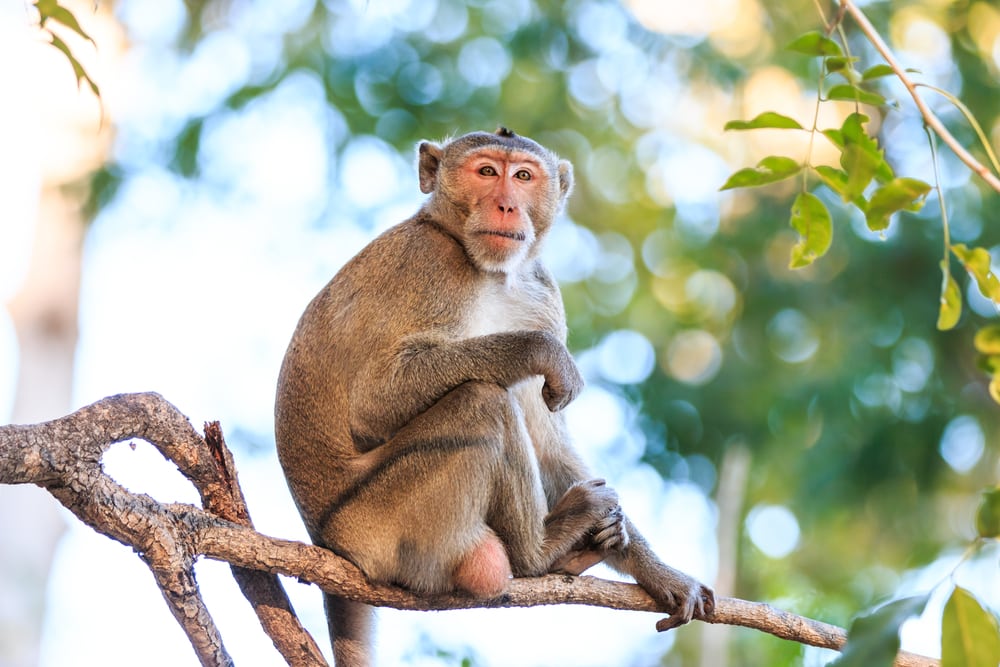Outforia Quicktake: Key Takeaways:
- The crab-eating macaque is known for diving into mangrove swamps to feed on crabs.
- The species exhibits sexual dimorphism, with males being larger than females. Their tails, which are the same length as their bodies, aid in balance during tree navigation.
- They live in matrilineal social groups led by an alpha male and demonstrate complex social behaviors and communication skills to survive in their environments.
- Apart from crabs, they consume a diverse diet including fruits, seeds, insects, and small vertebrates, which allows them to adapt to different environments.
- Their relationship with humans is multifaceted. While they play a crucial role in scientific research, they can pose significant economic losses to farmers due to crop raiding.
The crab-eating macaque, also known as Macaca fascicularis, is a primate species found in various parts of Asia. It gets its common name from the unique behavior of diving into mangrove swamps to capture and feed on crabs.
Despite this fascinating trait, it’s important to note that not every crab-eating macaque demonstrates this behavior throughout its entire range.
Crab-Eating Macaque Taxonomy
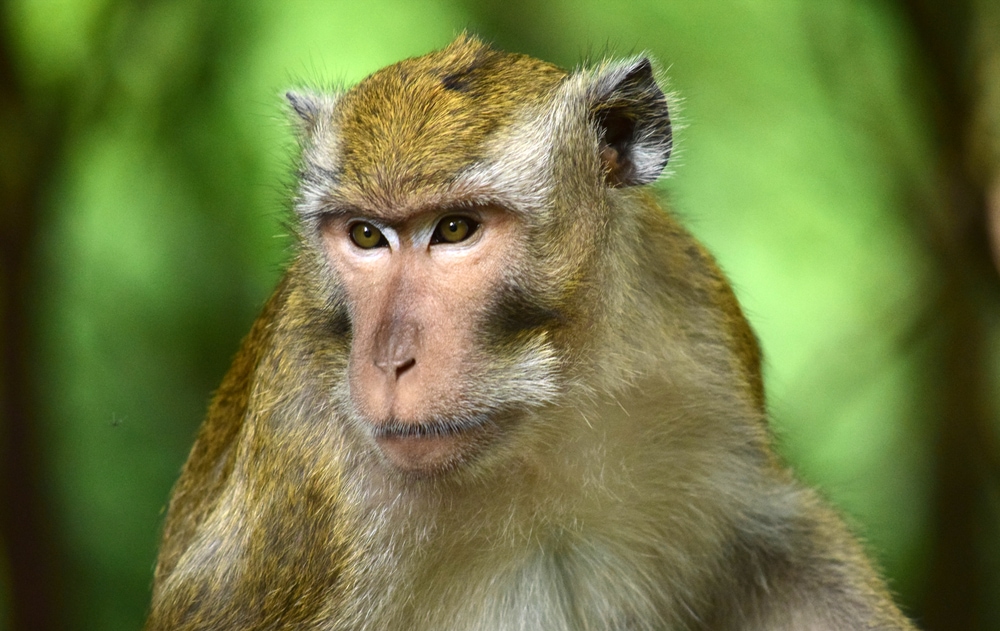
They are part of the order Primates, which also includes other monkey species, apes, and humans. This particular macaque species falls under the family Cercopithecidae, which mostly encompasses Old World monkeys.
The Macaca genus is notable because it contains a wide variety of monkey species spread across Asia and North Africa.
Among these species, the crab-eating macaque stands out because of its adaptive behavior and unique feeding habits.
Physical Characteristics
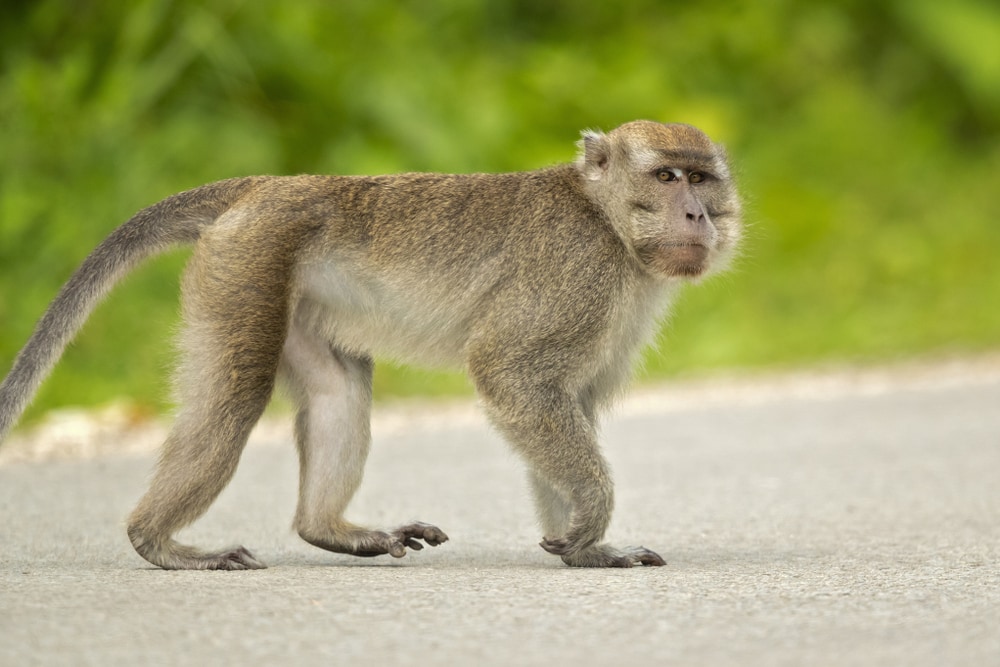
They have a body length of 15-22 in (38-55 cm) and exhibit a range of coat colors.
While most macaques have gray fur, some have dark brown or even black fur, depending on their subspecies. Their faces are typically whiskered and brown, with a distinctive appearance that sets them apart from other primates.
One notable feature of these macaques is their tail, which measures almost the same length as their body. This long tail serves as a balancing tool when they leap between tree branches, helping them navigate their natural environment with ease.
Sexual dimorphism is evident in these macaques, with males being considerably larger than females. Males weigh between 5-9 kg (11-20 lb), while females are lighter at just 3-6 kg (6.6-13.2 lb).
Unique Traits and Adaptations
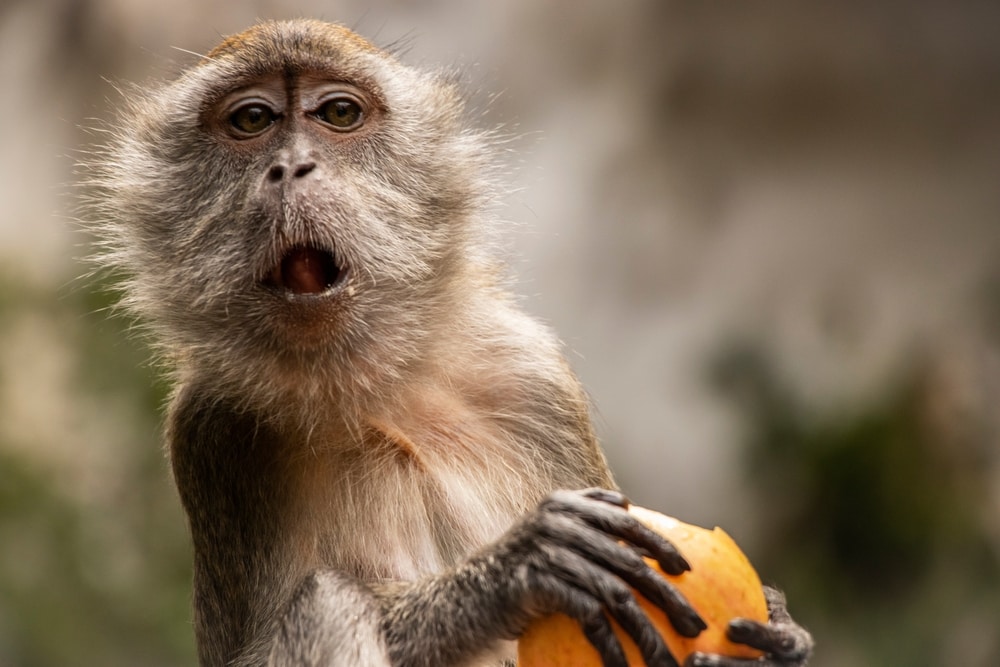
Within their dominance hierarchy, the crab-eating macaque has an alpha male who leads the group.
This alpha male asserts his dominance through unique traits and adaptations like the ability to swim and climb trees better than other group members.As their name suggests, these macaques also have the unique ability to dive into mangrove swamps to capture crabs. This behavior, however, is not exhibited throughout their entire range, as some populations rely more on plant-based diets, such as fruits, seeds, and leaves.
Natural Habitat and Geographic Distribution
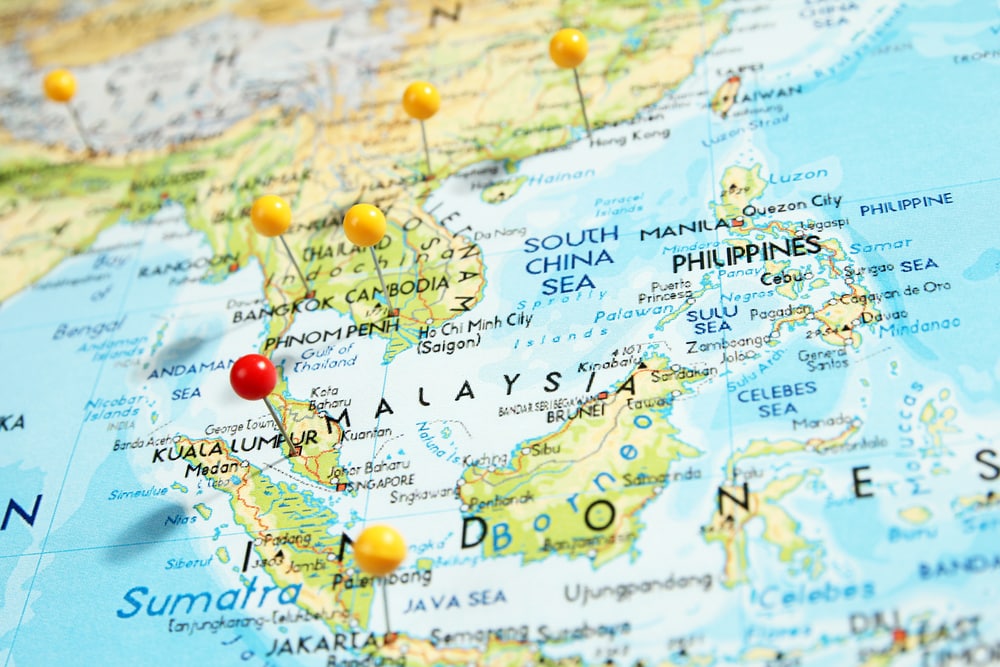
These macaques are adaptable creatures native to Southeast Asia.
They can be found in Malaysia, Indonesia, Thailand, Myanmar, the Philippines, Cambodia, and even some parts of India. These fascinating primates have also been introduced to Mauritius, Palau, and Sumatra.
Also known as long-tailed macaques, they’re versatile in their habitat preferences, and that’s one of the key aspects of their wide distribution.
They thrive in various types of forests, including coastal, mangrove, riverine, and swamp forests.
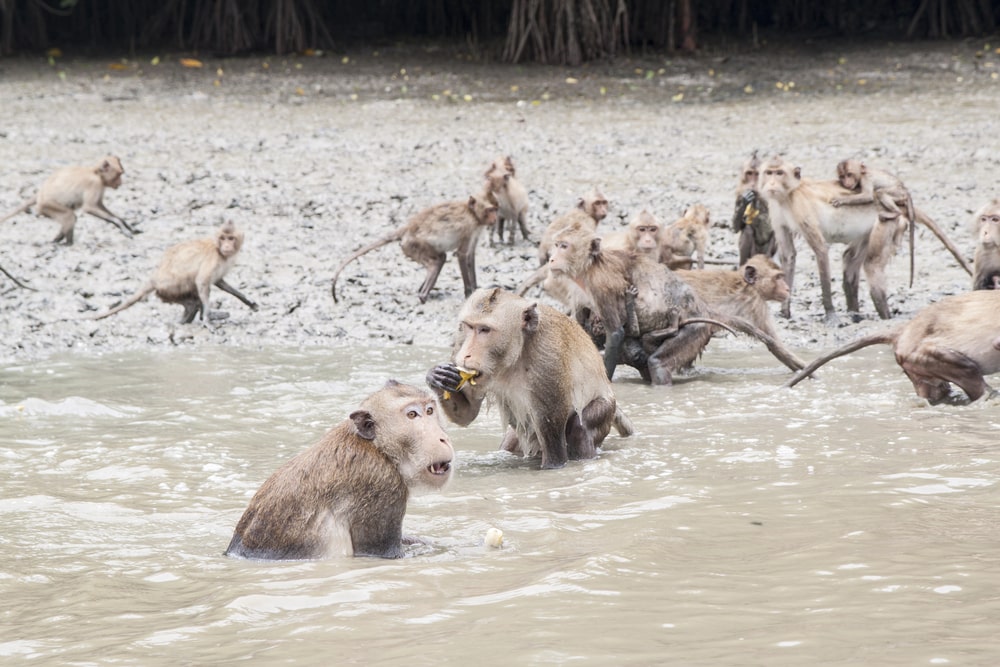
Coastal forests and mangrove swamps in particular are their preferred habitats, as these areas are abundant in food sources such as the crabs they love to feast on.
Despite their name, they aren’t limited to crabs. They also consume fruits, seeds, insects, and even small vertebrates. This adaptability in their diet plays a significant role in their ability to flourish in different environments.
These monkeys are well-adapted to both tropical and semi-tropical climates. They have a strong presence at low elevations, particularly along seashores, river banks, and swamps.
They’re also known to thrive in urban areas and human settlements
Lifestyle of the Crab-Eating Macaque
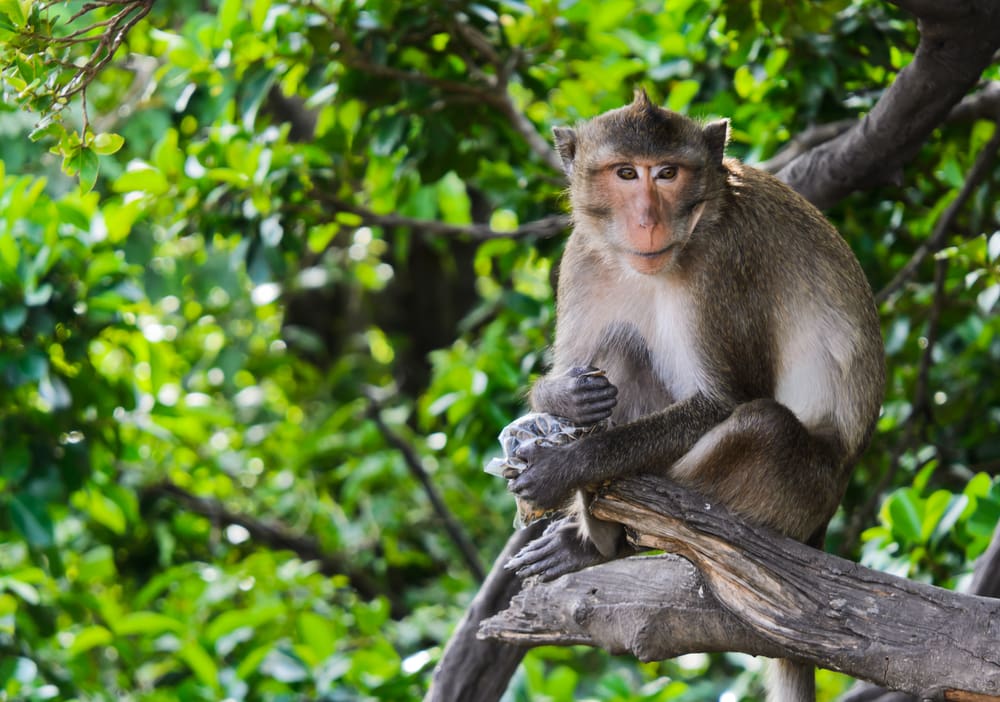
When it comes to acquiring food, the crab-eating macaque employs several strategies depending on the prey. They may use their hands, feet, or mouth to catch insects or pick fruits.
In addition to their opportunistic feeding habits, these primates also have a unique ability to exploit human-created food resources, which has made them successful in urban environments.
As they live in matrilineal social groups, hunting birds, eggs, and small vertebrates requires cooperation and coordination among troop members. The success of the group depends on their ability to work together and establish a hierarchy that ensures everyone gets enough food.
Capability to Use Tools
What makes this species even more intriguing is its ability to use tools to access hard-to-reach foods. For example, they have been known to use sticks or stones to extract insects from tree bark or to crack open hard-shelled fruits and seeds.
This special skill demonstrates the species’ problem-solving abilities and adaptability to diverse environments, making them stand out among other primates.
Social Behavior and Communication
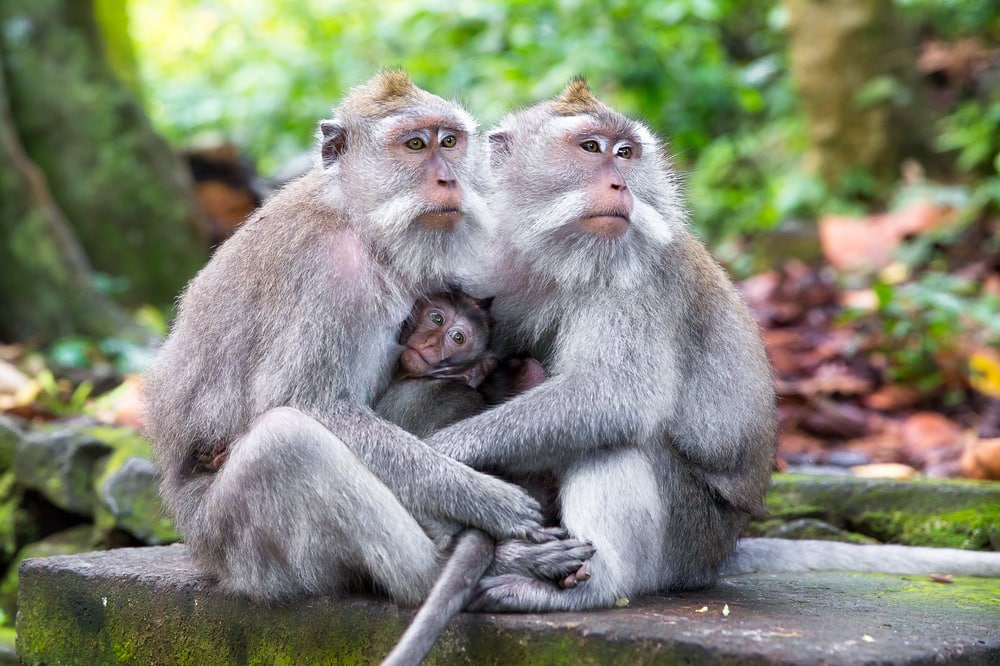
They have complex social behaviors and communication skills that enable them to survive in their ever-changing environments.
The key to their impressive social lives can be found in their matrilineal social groups. These groups, which typically consist of up to eight individuals, are dominated by females who establish a dominance hierarchy.
This hierarchy plays a significant role in determining access to valuable resources, such as food, and preferential mating partners.It is crucial for members of this social group to engage in grooming. This behavior not only strengthens bonds between group members but also serves as a means of stress relief.
Communication Among Crab-Eating Macaques

Another essential aspect of their social relationships is communication. They rely on various vocalizations and body language to convey messages and coordinate activities with their fellow group members.
However, as with any society, not everything is always peaceful among crab-eating macaques. In fact, instances of aggression are not uncommon, usually reflecting disputes over resources or dominance status.The way that these macaques resolve conflicts can vary, ranging from outright fighting to more subtle power displays and posturing.
Reproduction Cycle and Lifespan

The reproduction of these macaques involves a few key stages, including mating, gestation, and the social dynamics within their groups.
Long-tailed macaques mate throughout the year but tend to exhibit increased mating activity during certain seasons. The alpha male in the group typically has priority access to females during these times, although subordinate males may still mate when given the opportunity.
In order to maximize their chances of passing on their genes, alpha males will guard and mate with multiple females to ensure successful reproduction.
The length of the menstrual cycle of female macaques ranges from 26-38 days, with a modal value of 28 days. Once successfully fertilized, the gestation period of female long-tailed macaques lasts approximately six months.
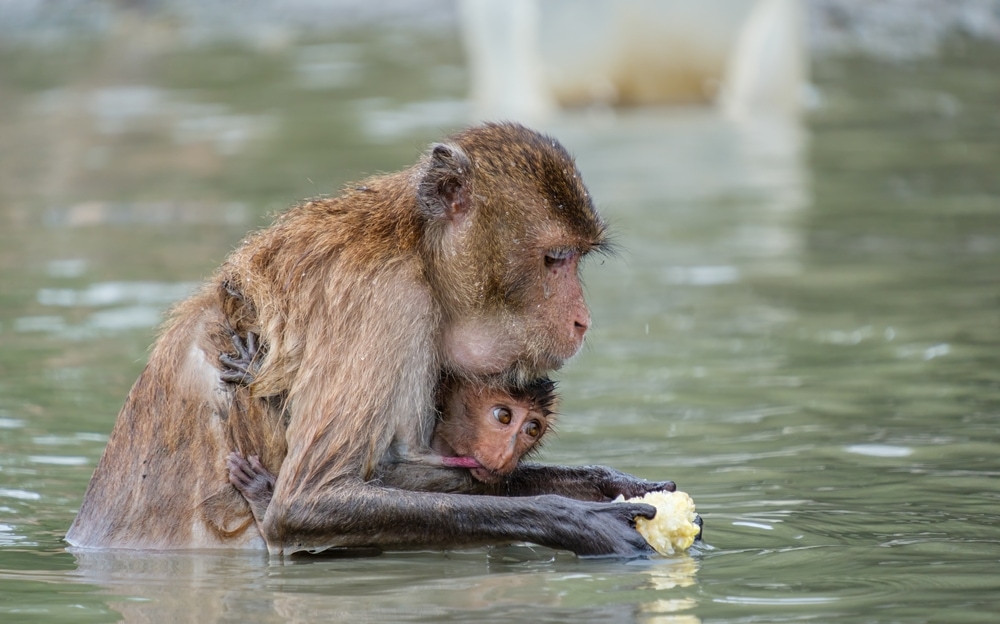
Females usually give birth to a single infant, although twins have been observed on rare occasions.
The mother takes primary responsibility for caring for her offspring, but other members of the group, including other females and the alpha male, may assist in protecting the infant.
As the young macaque grows, it will learn vital skills and behaviors necessary for survival in the wild, such as grooming, foraging, and establishing its place within the social hierarchy of the group. Crab-eating macaques have a lifespan of around 25 years in the wild.
You may also like: How Long Do Monkeys Live? Exploring The Intriguing Lives Of Monkeys And Their Lifespans
Crab-Eating Macaque’s Relationship with Humans
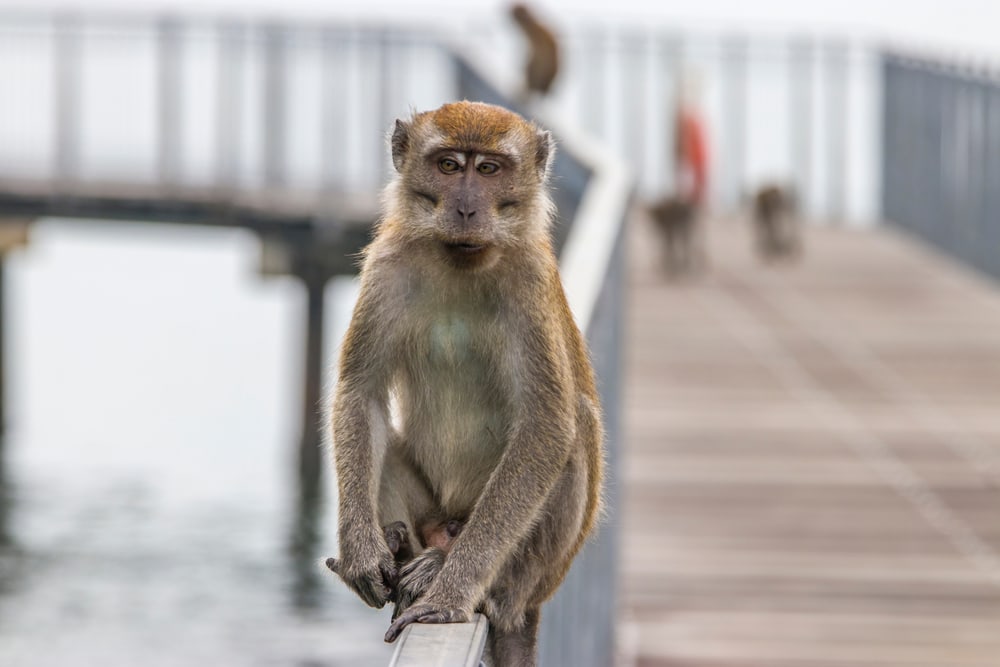
They have a significant relationship with humans, particularly in scientific research. In many laboratories, they are referred to as cynomolgus monkeys.These intelligent primates are often held in captivity for various research purposes, such as studying their behaviors, physiology, and cognitive abilities.

Economic Importance: The Good and the Bad
While the species plays an essential role in scientific research, its relationship with humans is not always harmonious.
In agricultural areas, these macaques have been considered pests due to their impact on crops. They have been known to raid crops, consuming rice and taro plants, leading to significant economic losses for farmers.
On the other hand, their presence in some regions, such as tourist destinations, can be beneficial to humans.
As an attractive species, they may draw visitors who are curious to observe their behavior and interactions in their natural habitat. In turn, this can lead to increased revenue for local economies through tourism.
Conservation Status
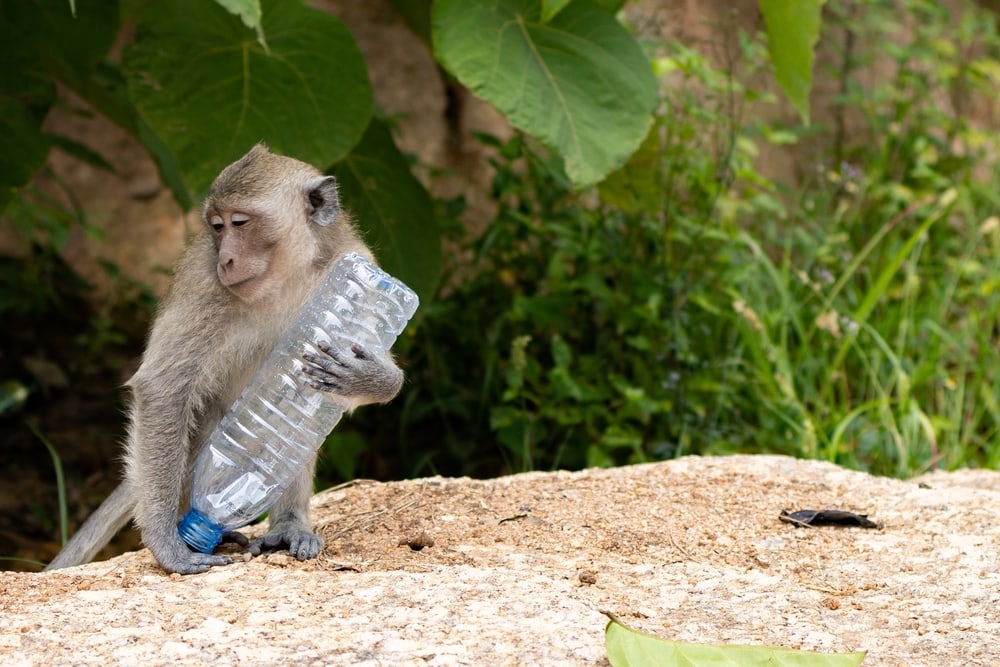
Over the years, the conservation status of the crab-eating macaque has worsened. They are now considered endangered.

Habitat loss
As human settlements spread, these agile primates have been losing their natural habitat. Rainforests and mangroves are being cleared to make way for agricultural land and urban development.
This results in a smaller habitat range for the species, increasing the risk of inbreeding and the loss of genetic diversity.

Human conflict
As their habitat shrinks, they are forced to venture closer to human settlements in search of food. This increases their exposure to potential conflicts with humans as they raid crops or scavenge for food.
In some cases, they are considered pests and may be trapped or killed to protect property.

Efforts and Challenges
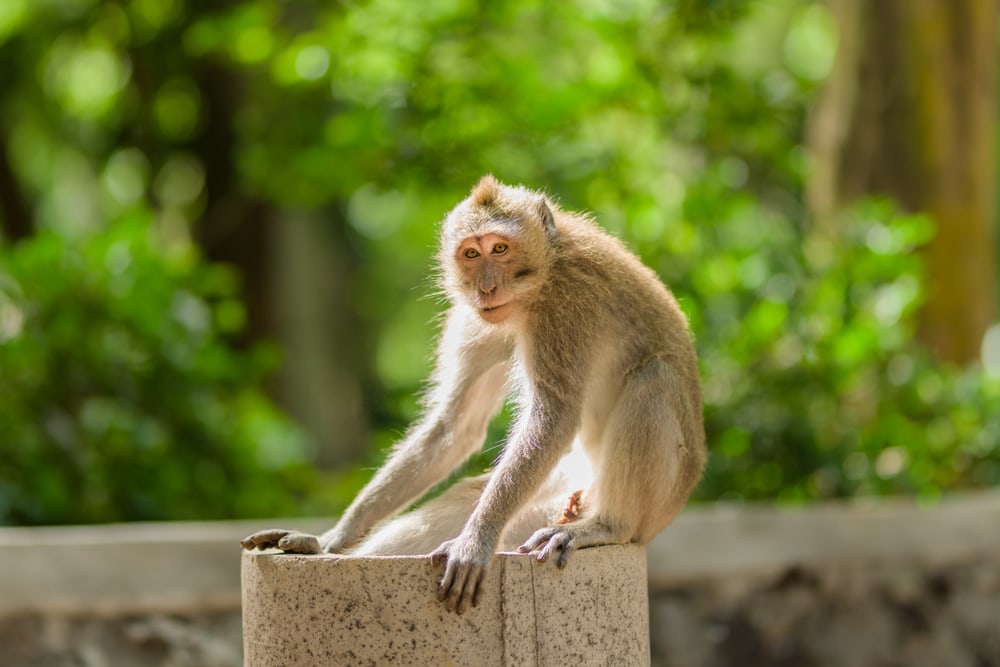
To protect these fascinating animals, there are several steps that can be taken:
- Establishment of protected areas: It’s crucial to establish national parks and wildlife sanctuaries. These protected areas will restrict human encroachment and allow the macaques to thrive in their natural habitat.
- Education and awareness campaigns: Educating locals about the importance of biodiversity and the role that crab-eating macaques play in maintaining a healthy ecosystem is critical. This can reduce negative perceptions and encourage people to support preservation efforts.
- Rehabilitation and release programs: For macaques who have been captured or injured due to human conflict, rehabilitation centers can provide a safe space to recover before being released back into the wild.
Despite these efforts, conservationists face many challenges. Funding is often scarce, meaning limited resources are available to support the establishment and maintenance of protected areas.
Additionally, rapid urbanization and a growing human population continue to put pressure on the macaques’ habitat.
FAQs
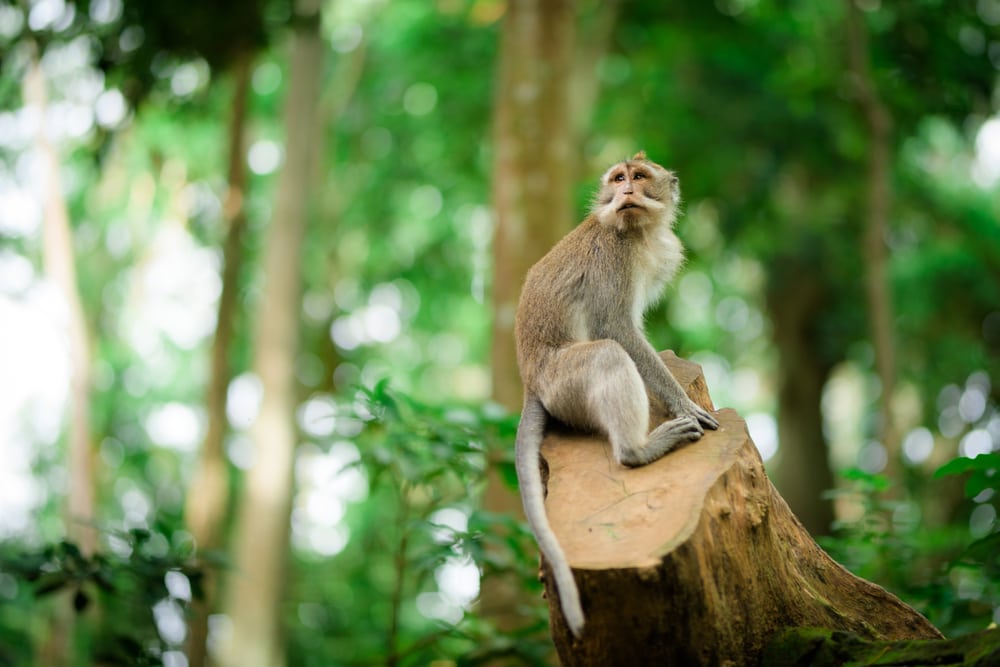
Are crab-eating macaques an invasive species?
Yes, crab-eating macaques can be considered invasive in some areas, particularly where they have been introduced by humans.
These adaptable and intelligent monkeys can thrive in a variety of environments, posing threats to local ecosystems and agriculture.
As they spread, they may outcompete native species, disrupt the balance of plant and animal life, and destroy food resources for other animals.
What are the common adaptations of crab-eating macaques?
One of their key adaptations is their versatile diet, which primarily consists of plant matter such as leaves, fruit, and flowers, but also includes insects and, of course, crabs in some locations.
This ability to dive into mangrove swamps to capture crabs is what gives them their name, though this behavior is not observed across their entire range.
Why do crab-eating macaques have long tails?
Their long tails and distinct tufts of hair on the tops of their heads are physical adaptations. The long tail helps with balance and movement in trees while the hair tufts protect their faces from rain and other environmental factors.



